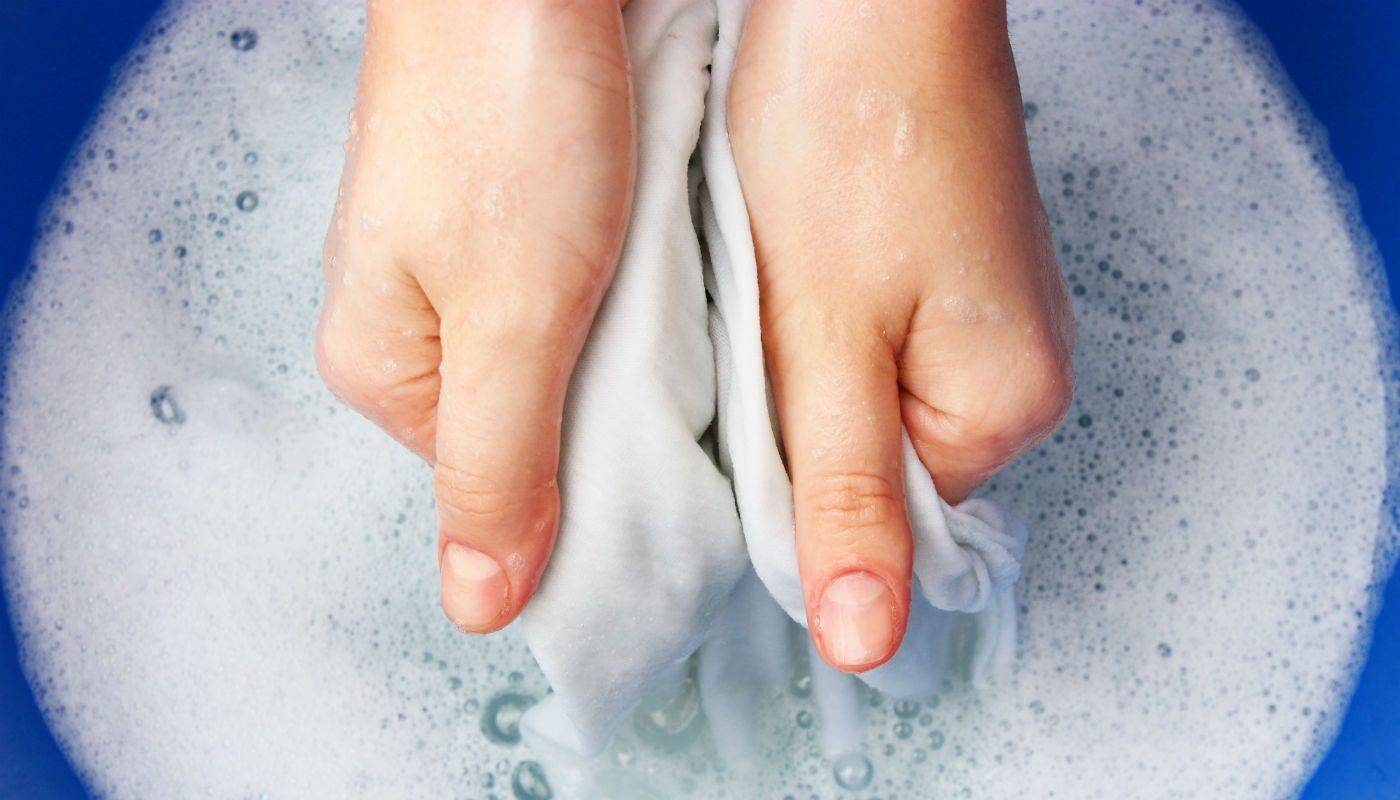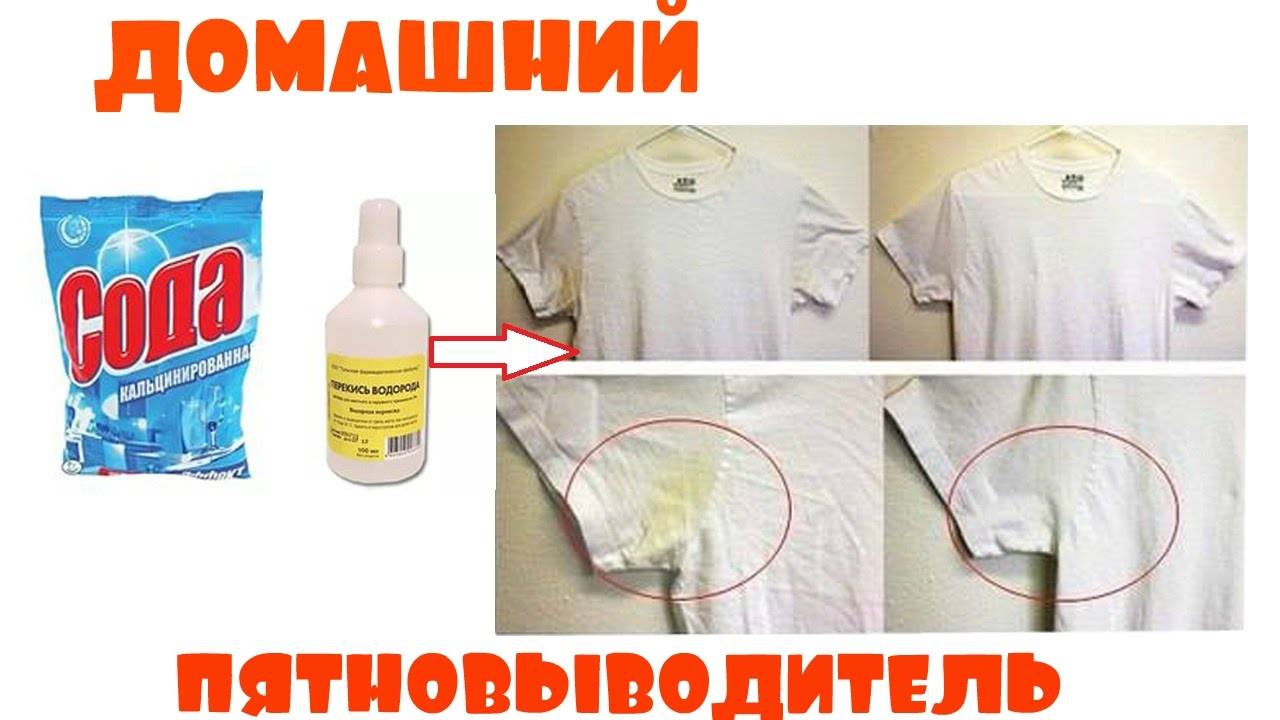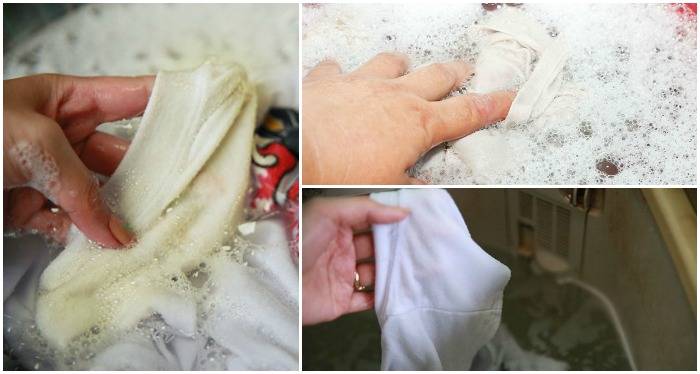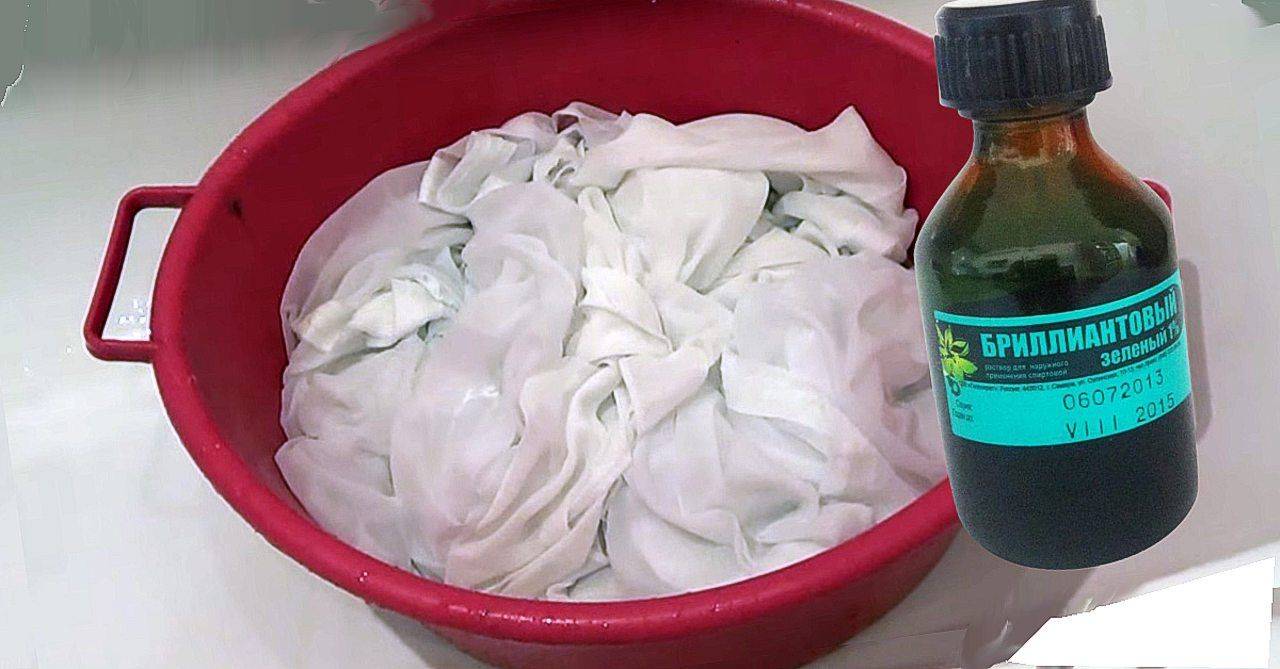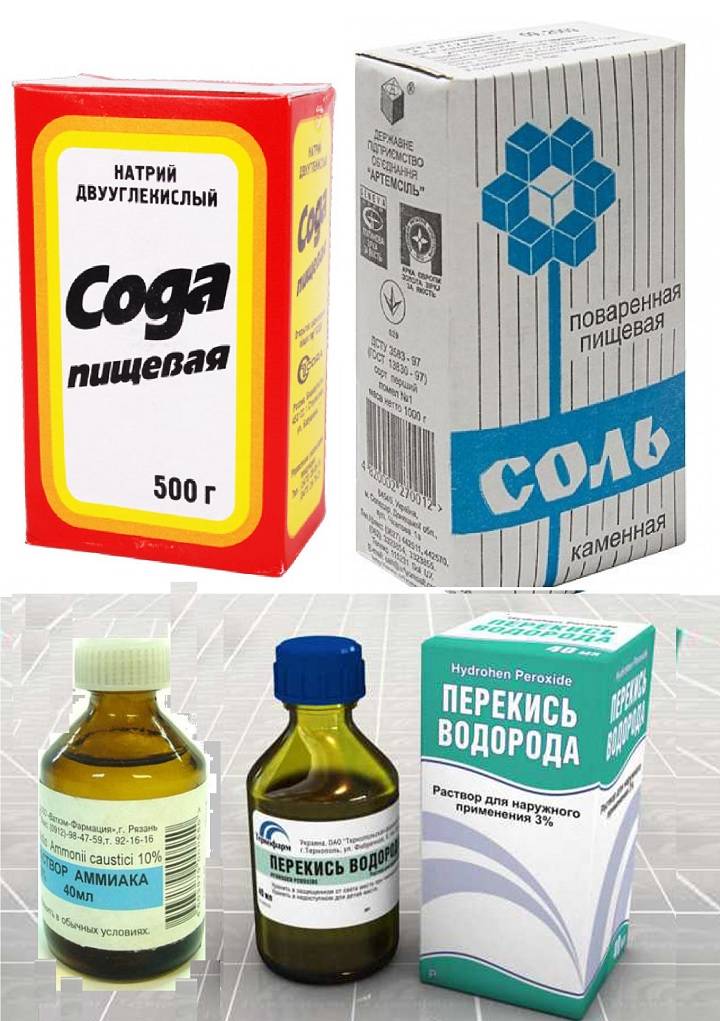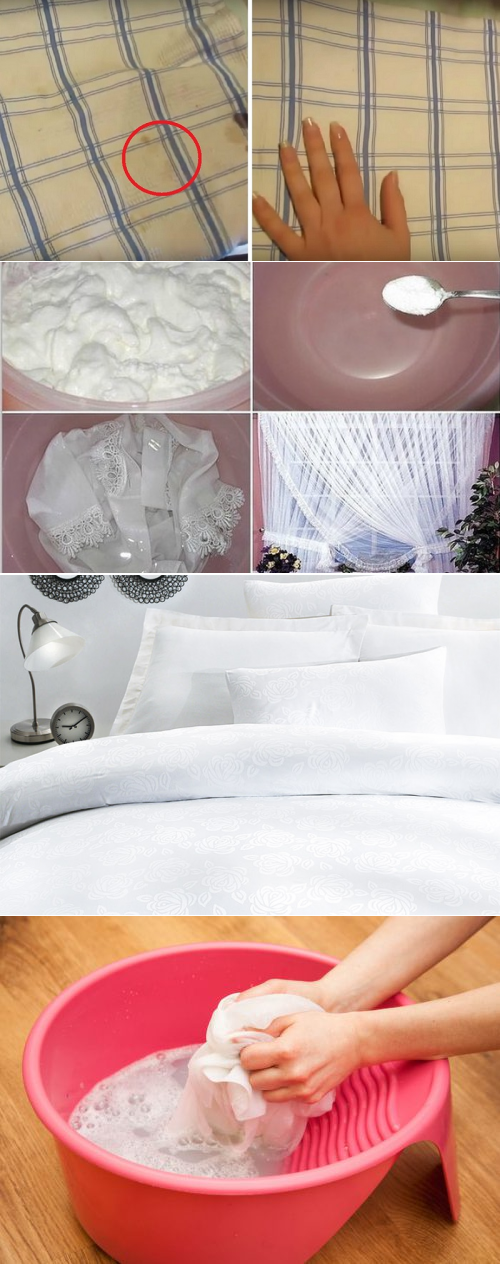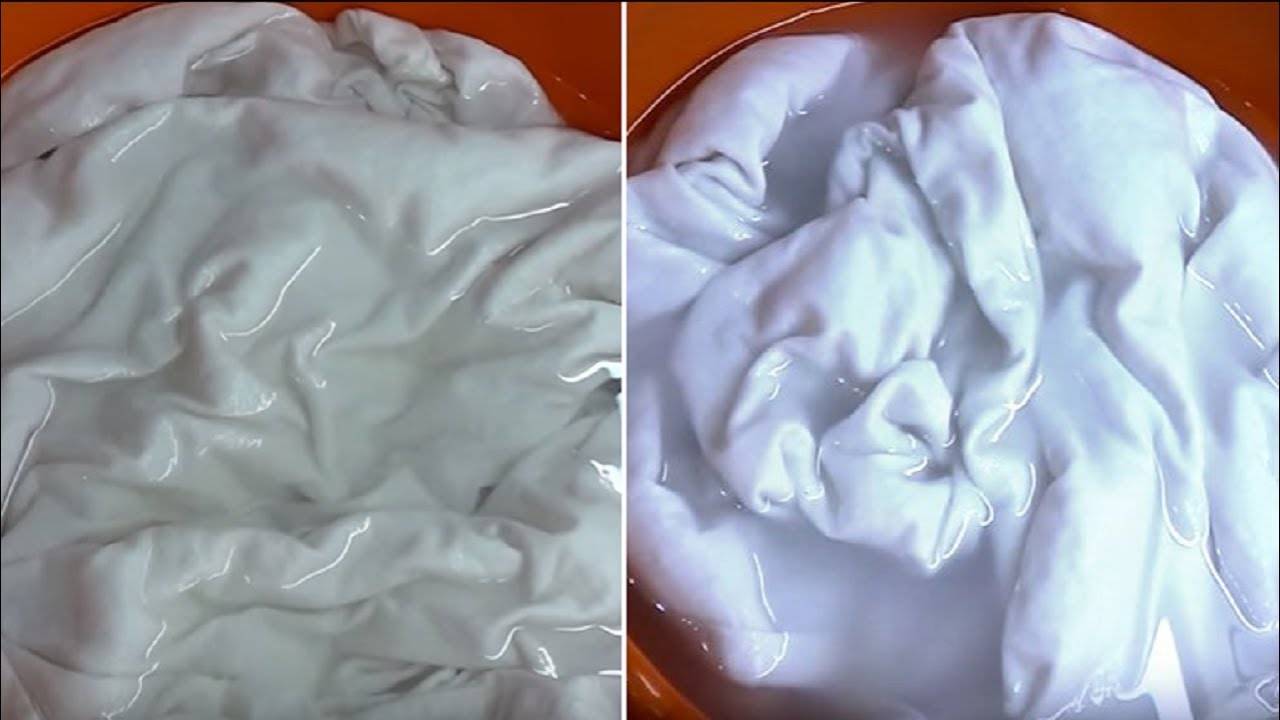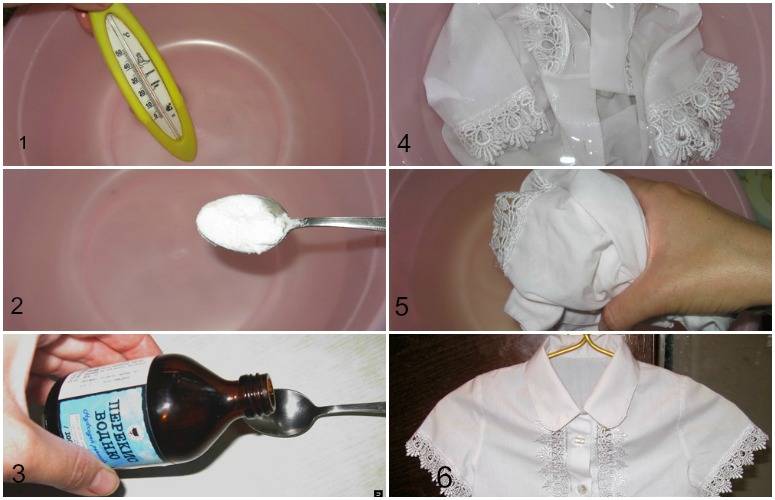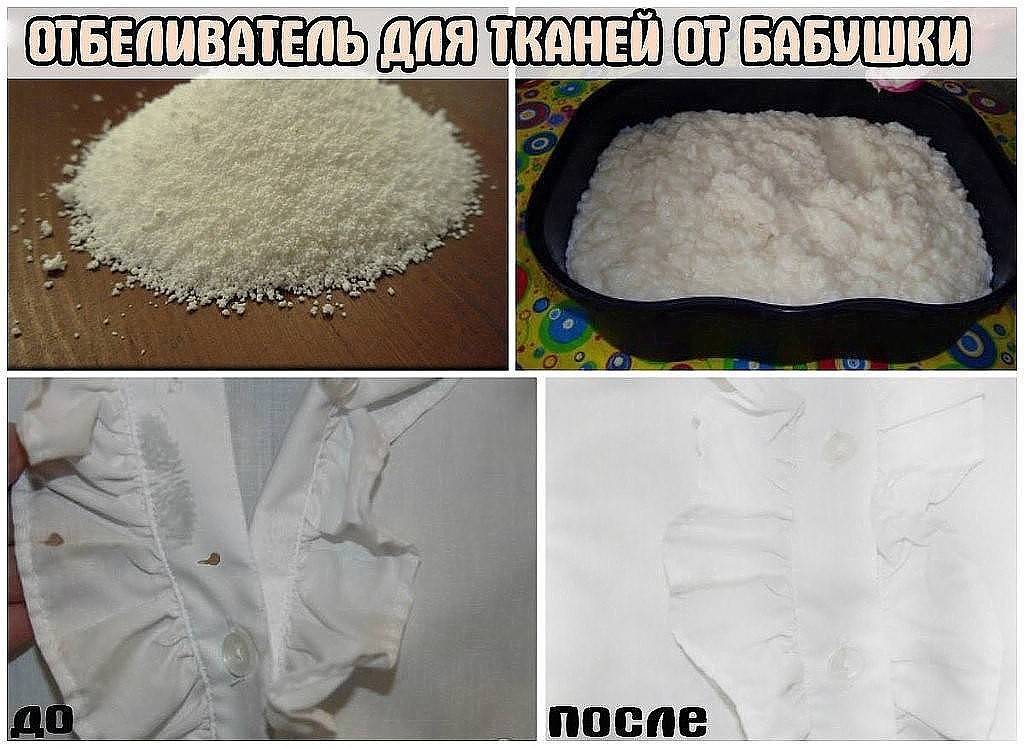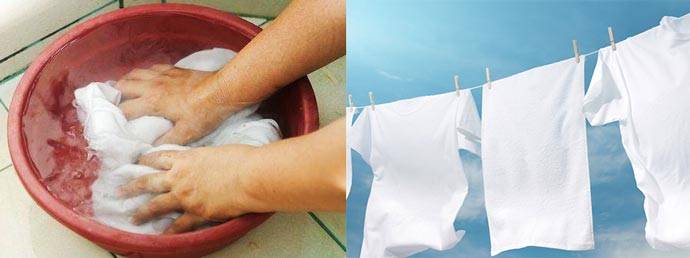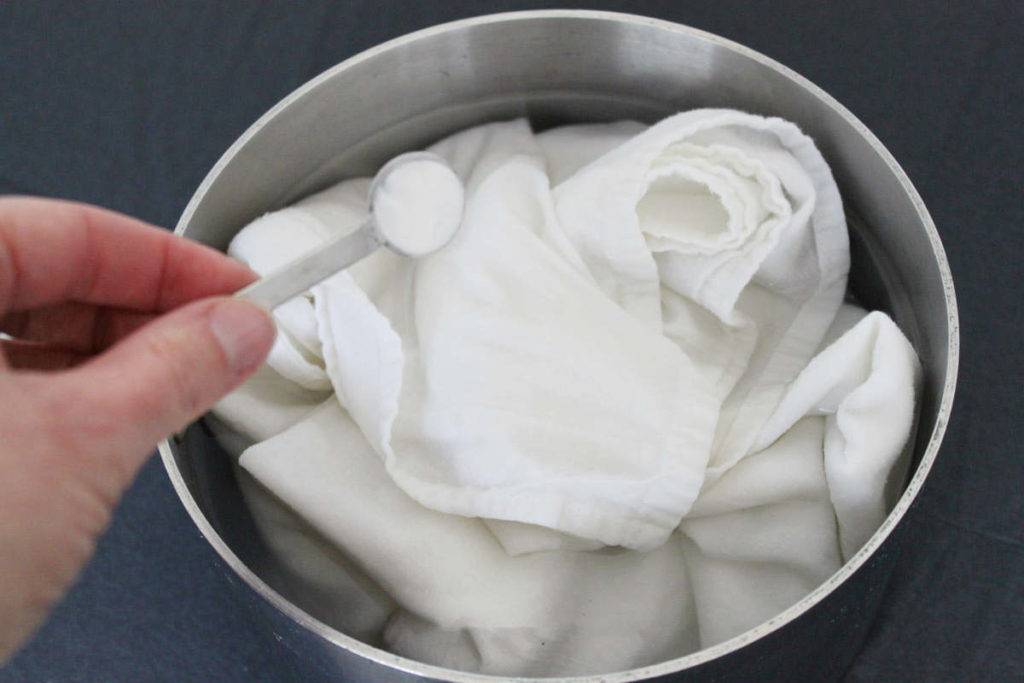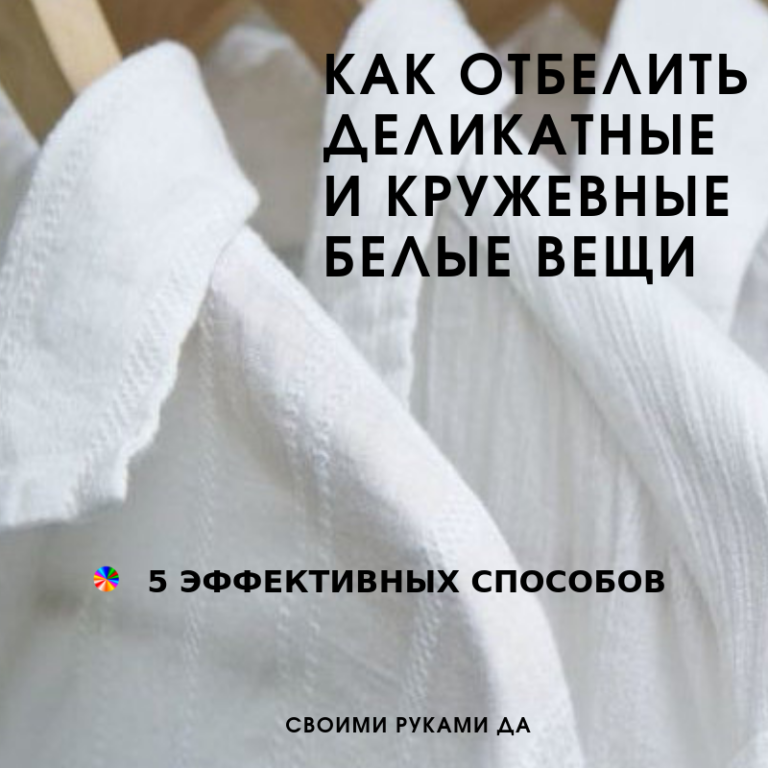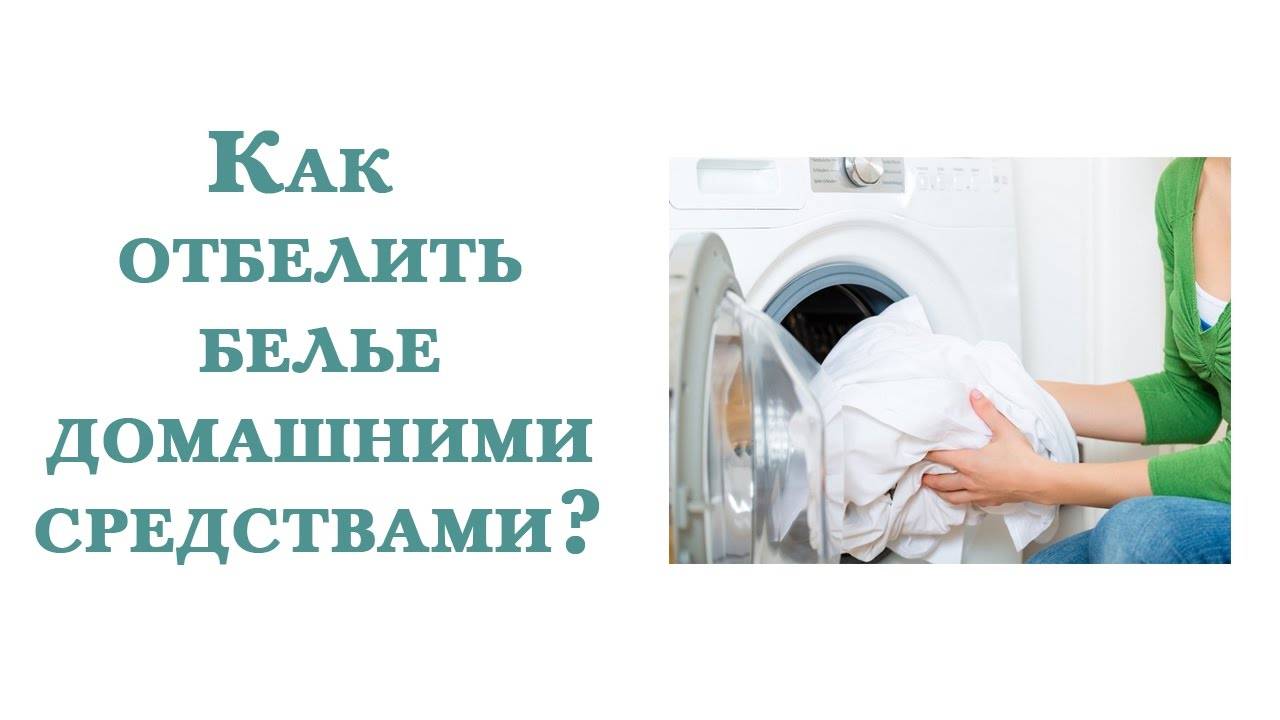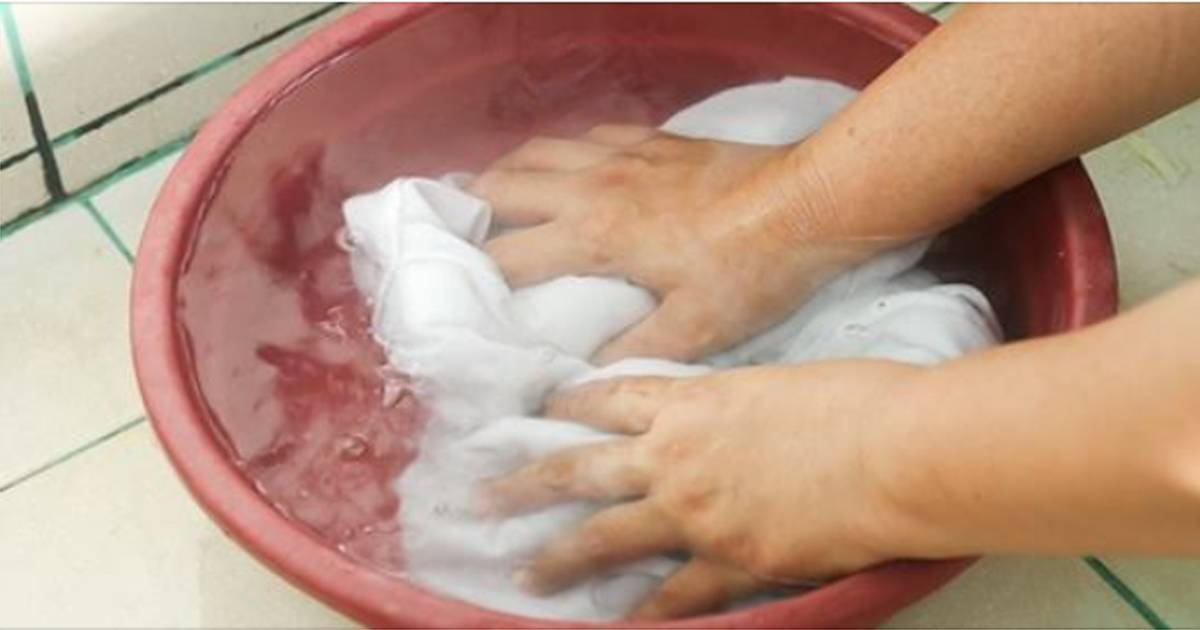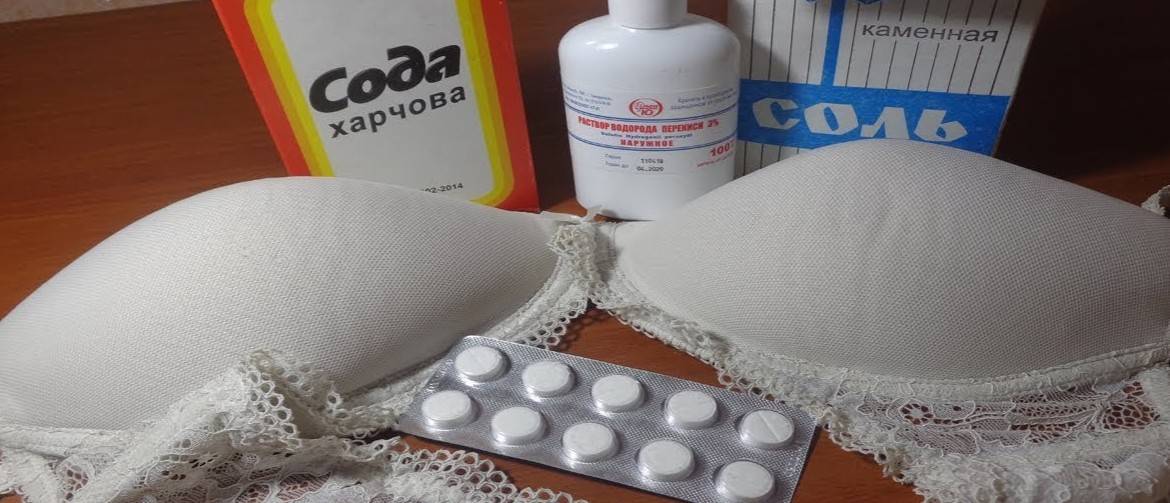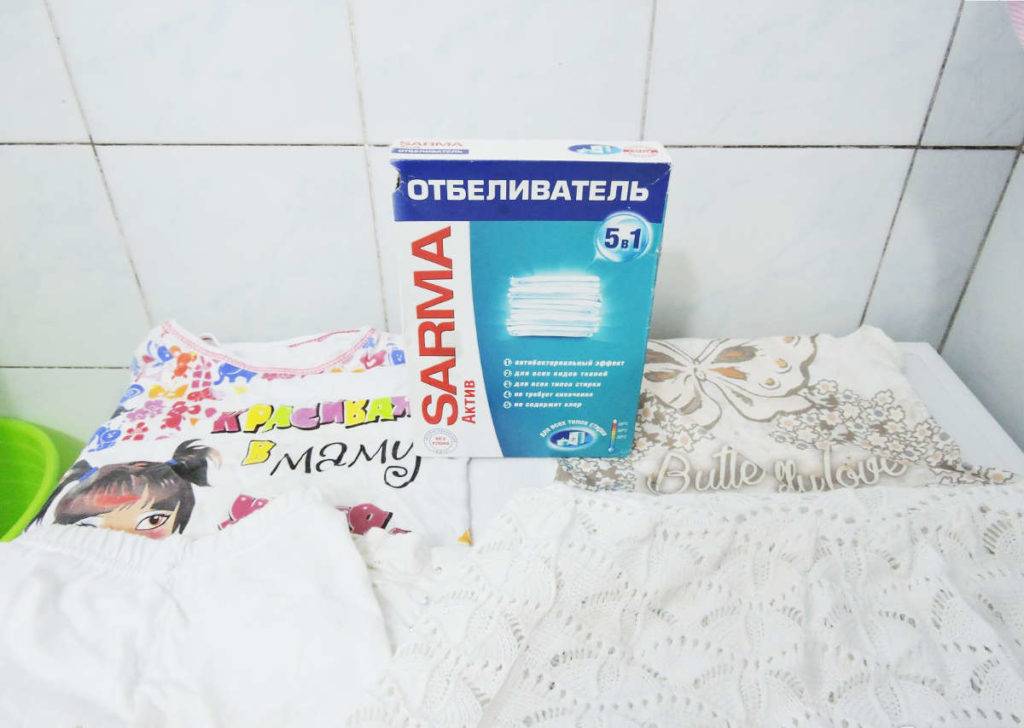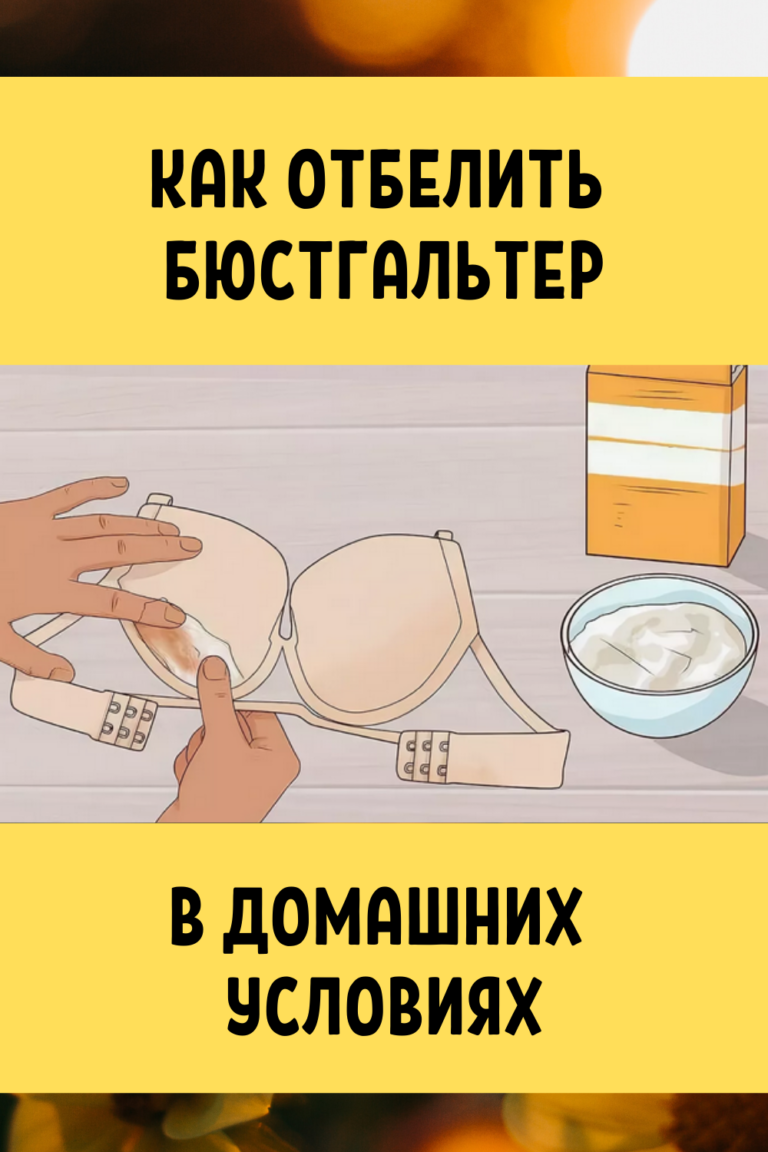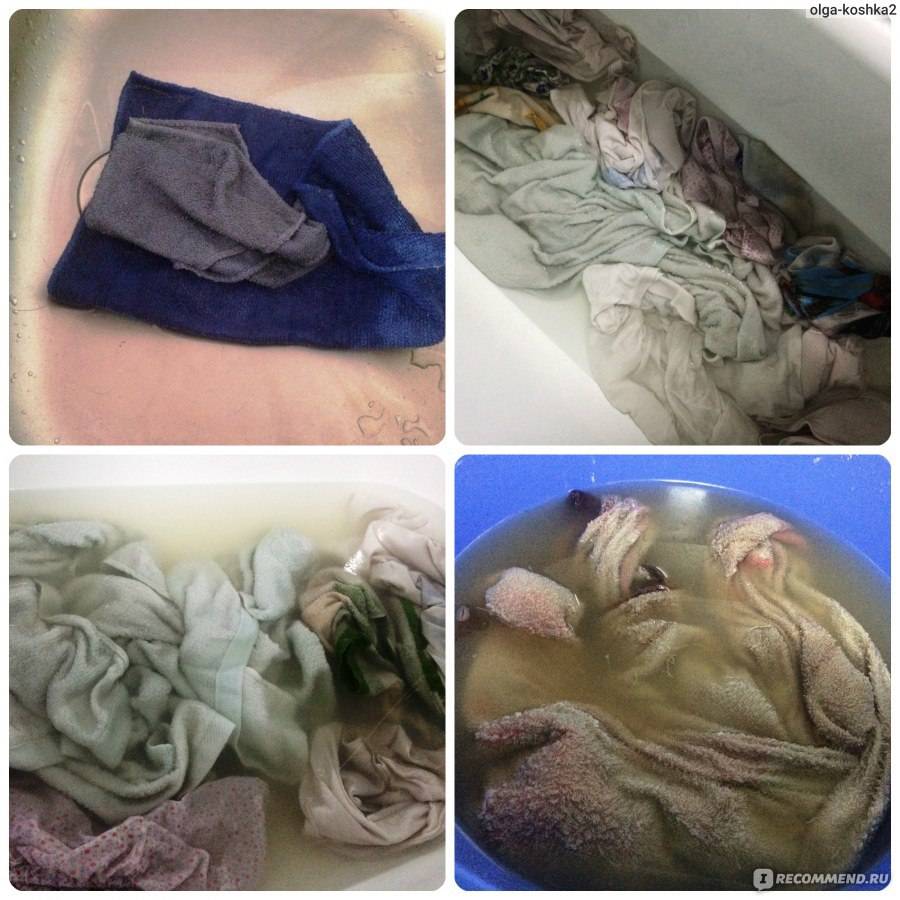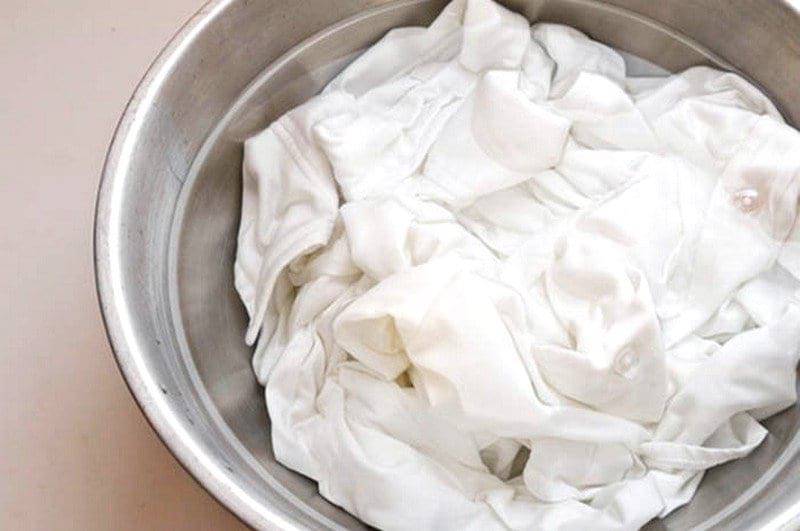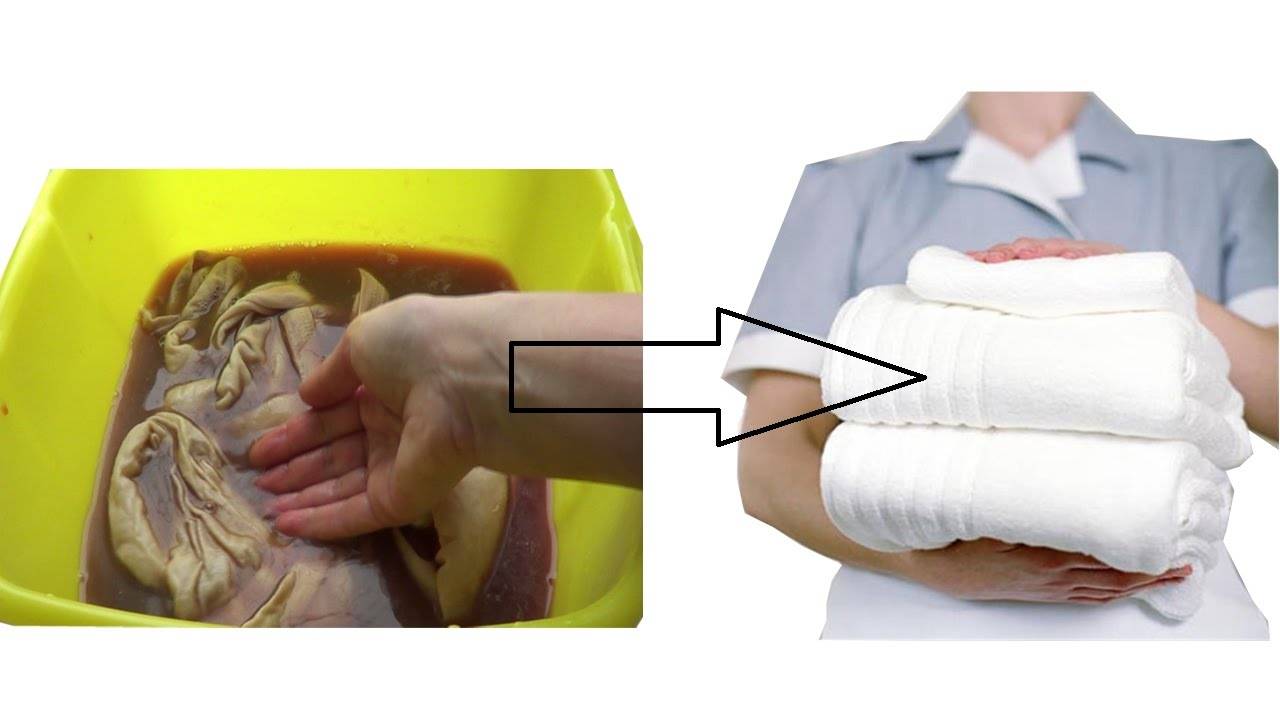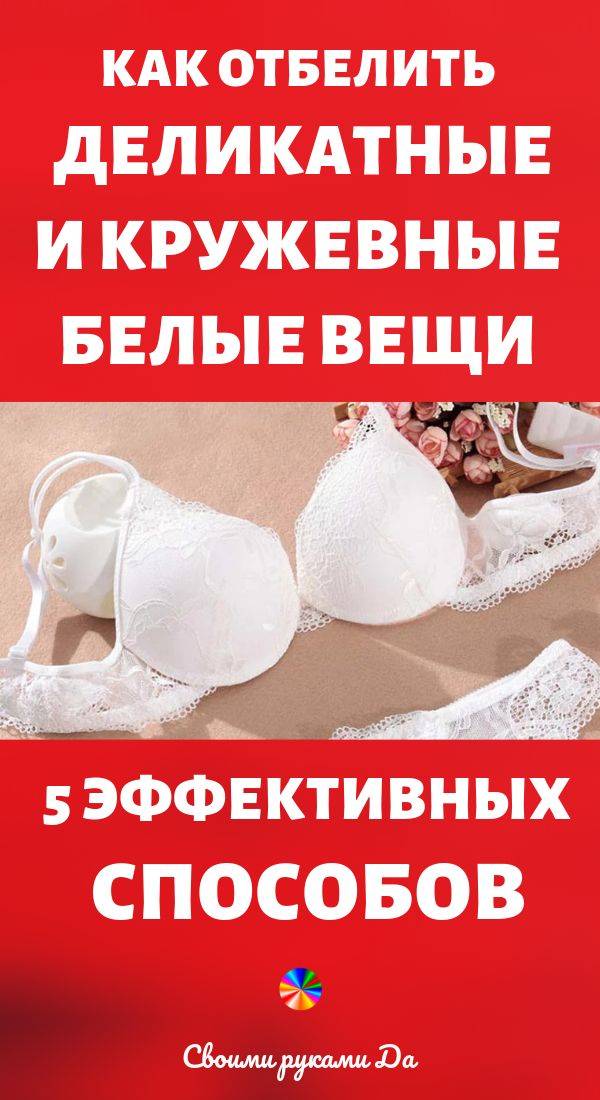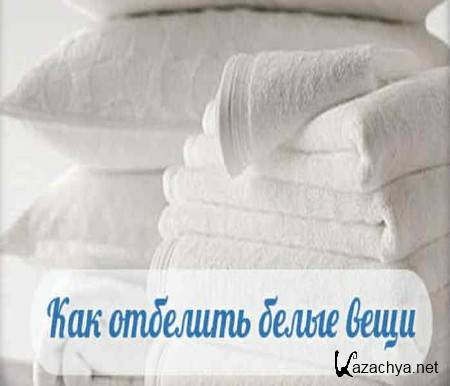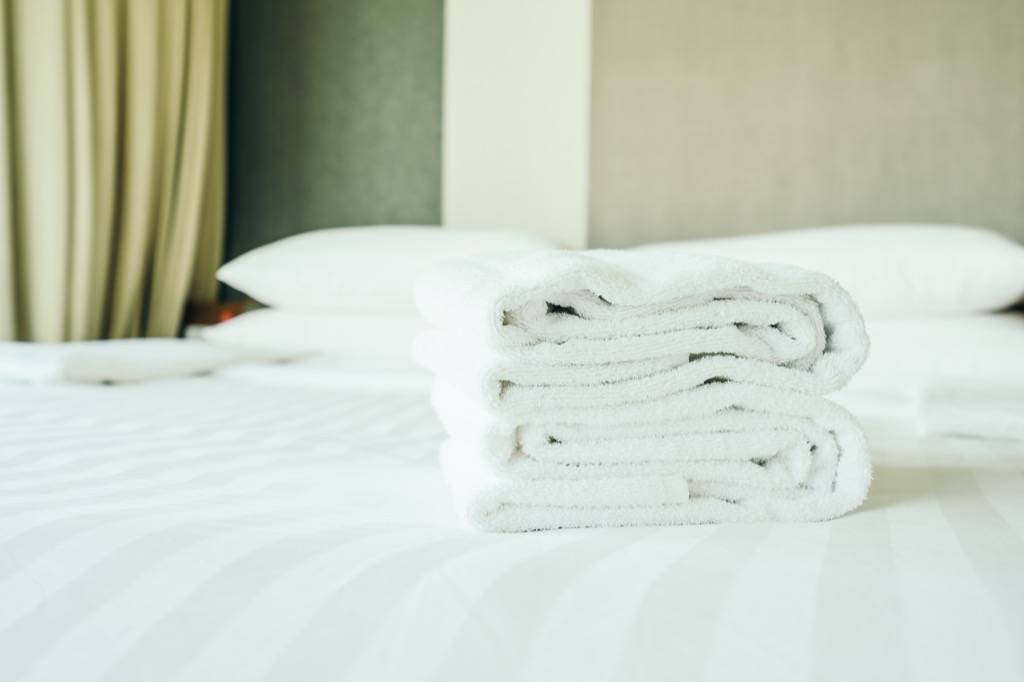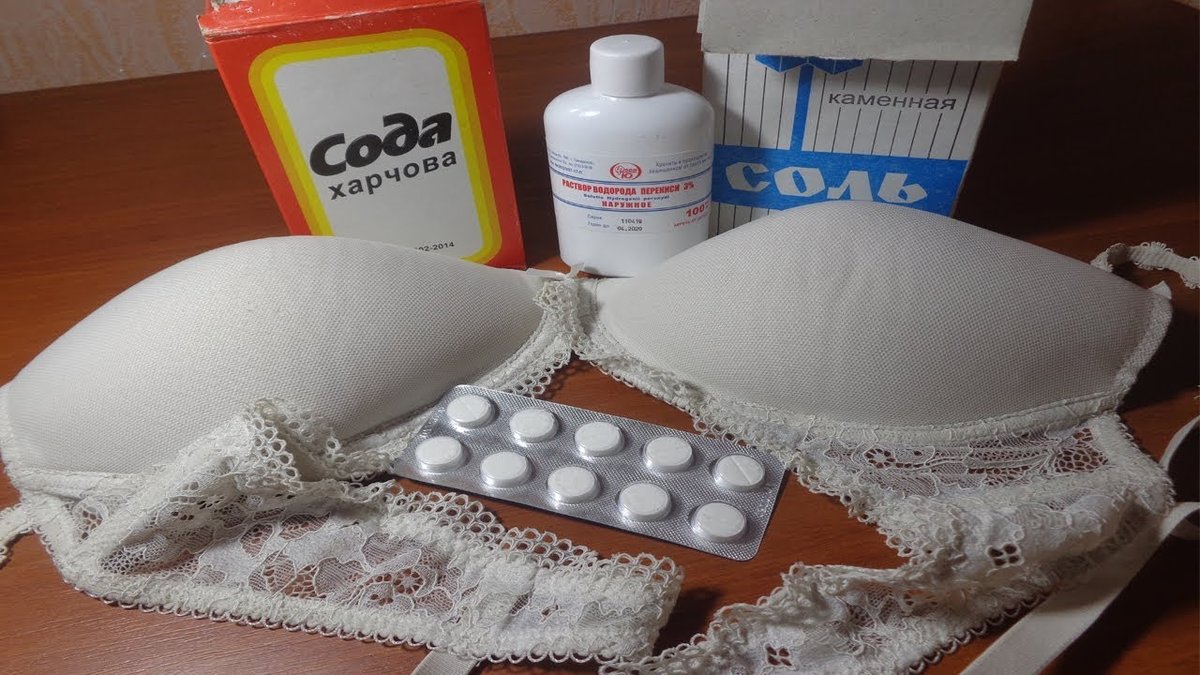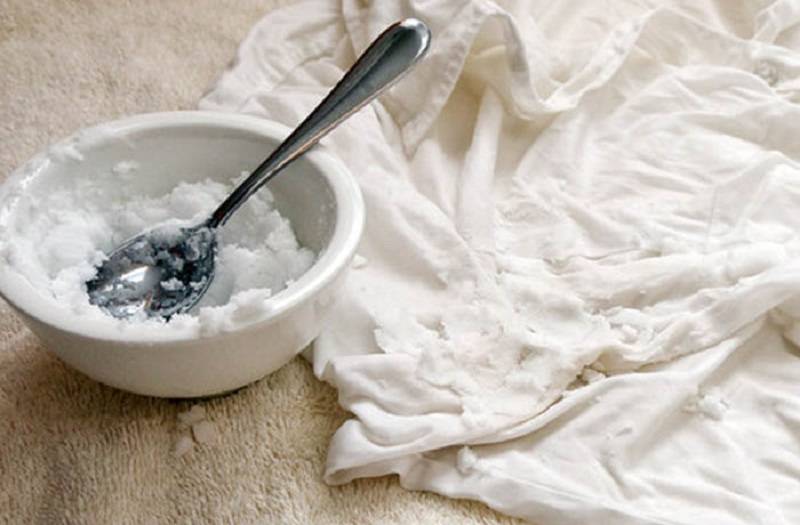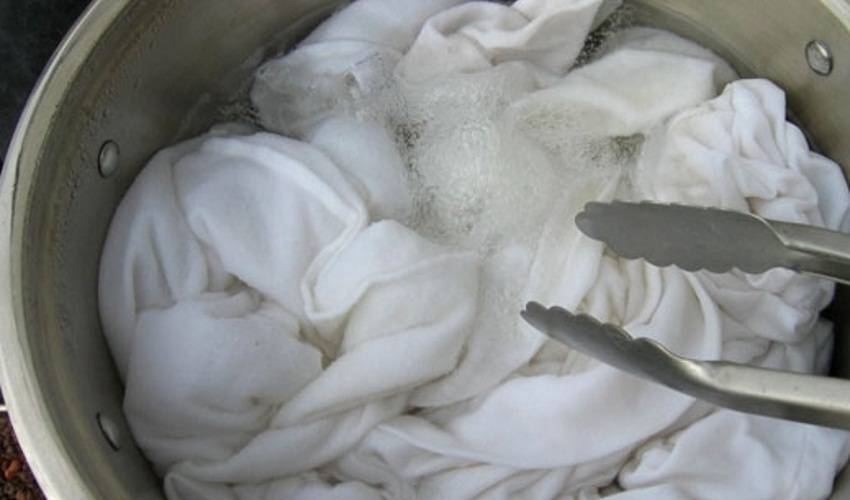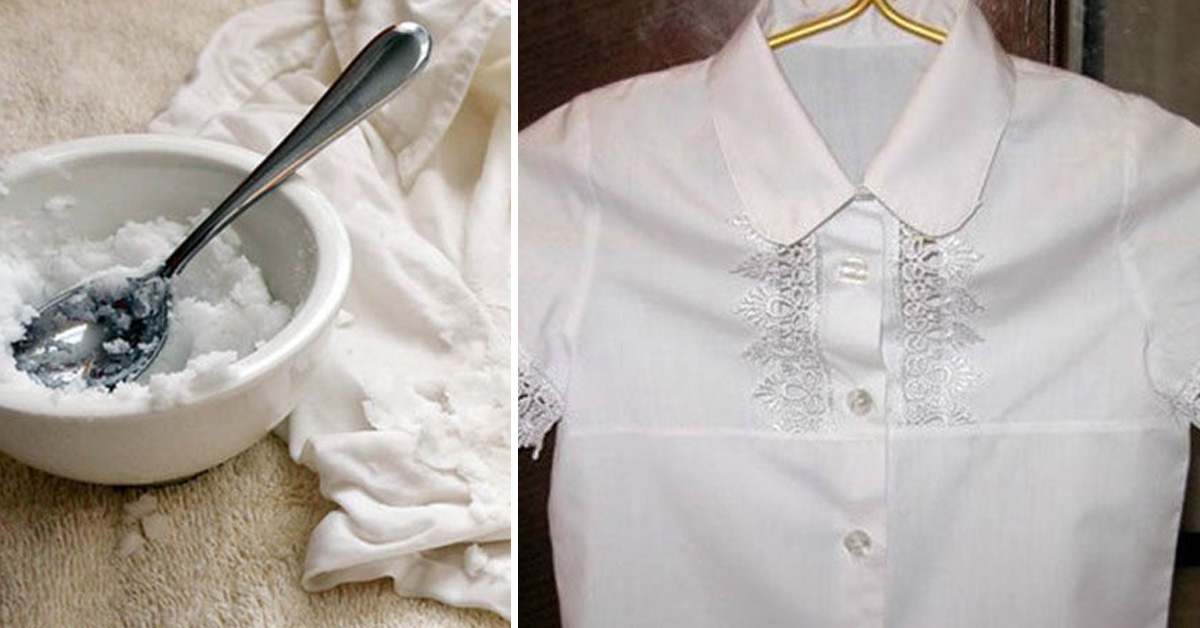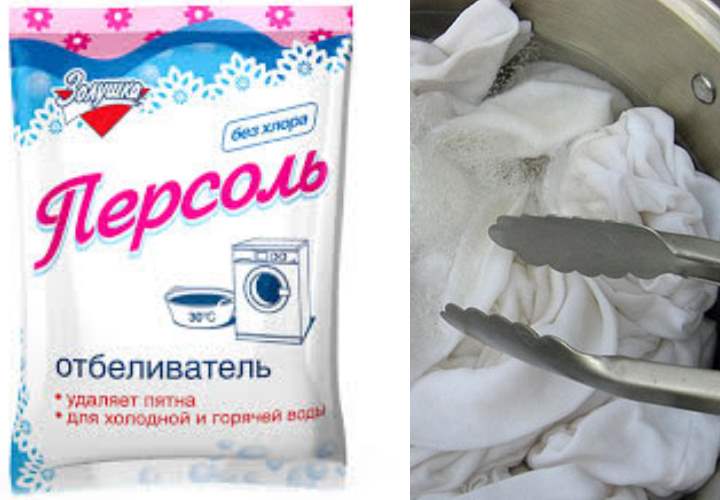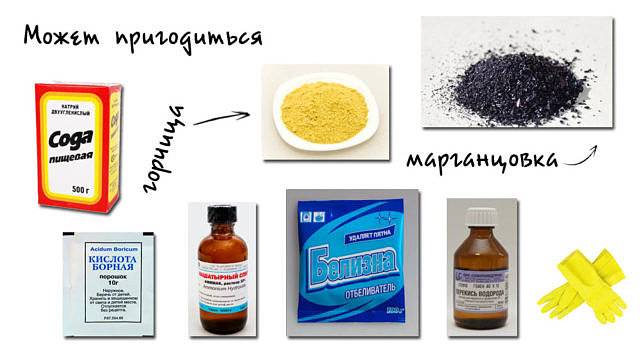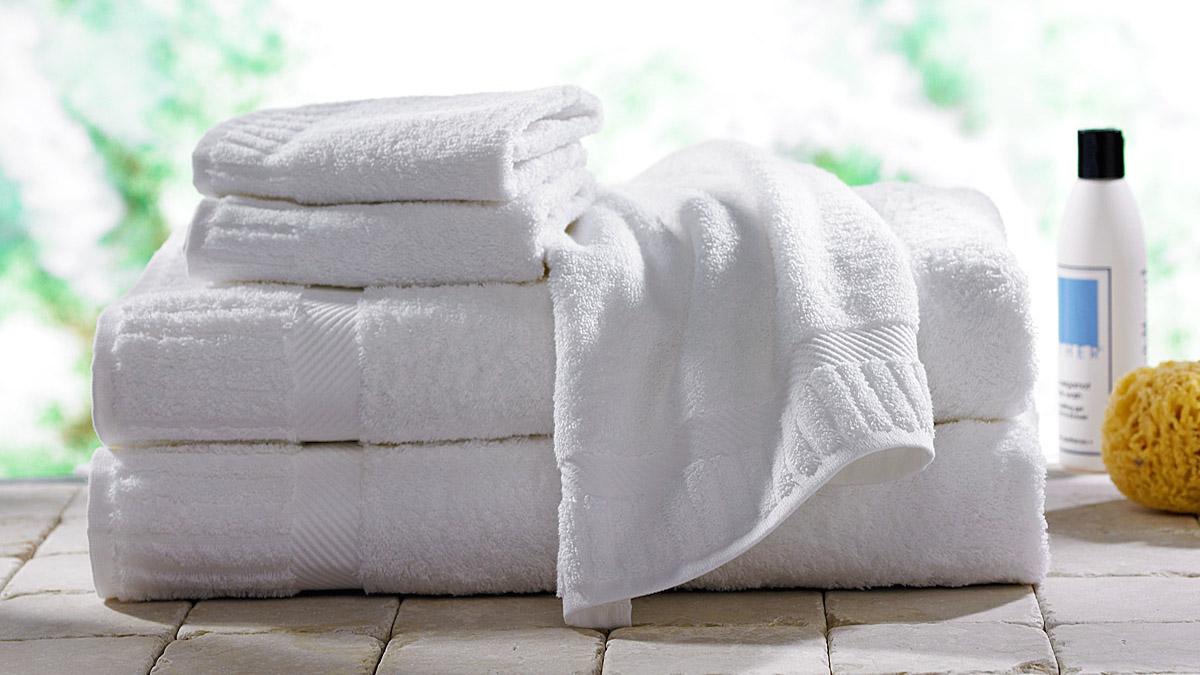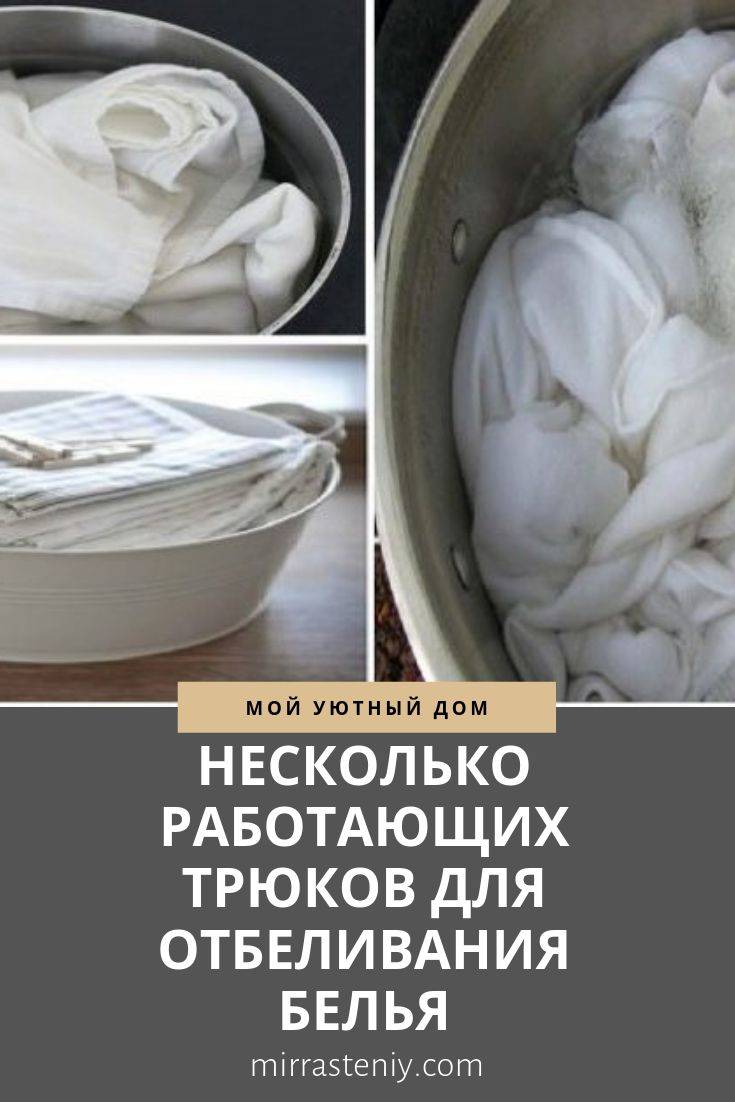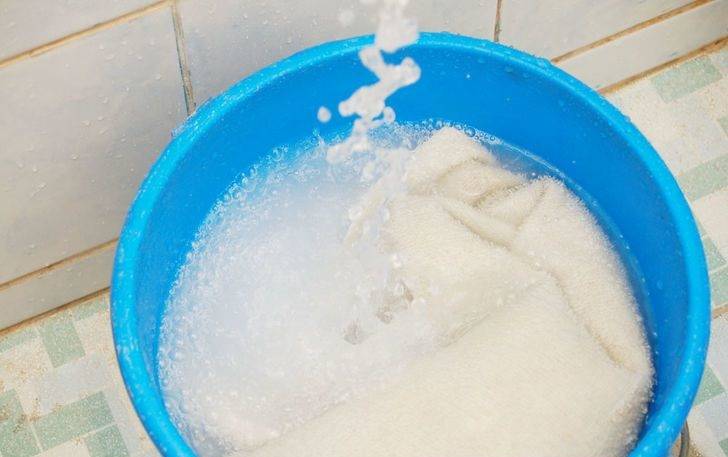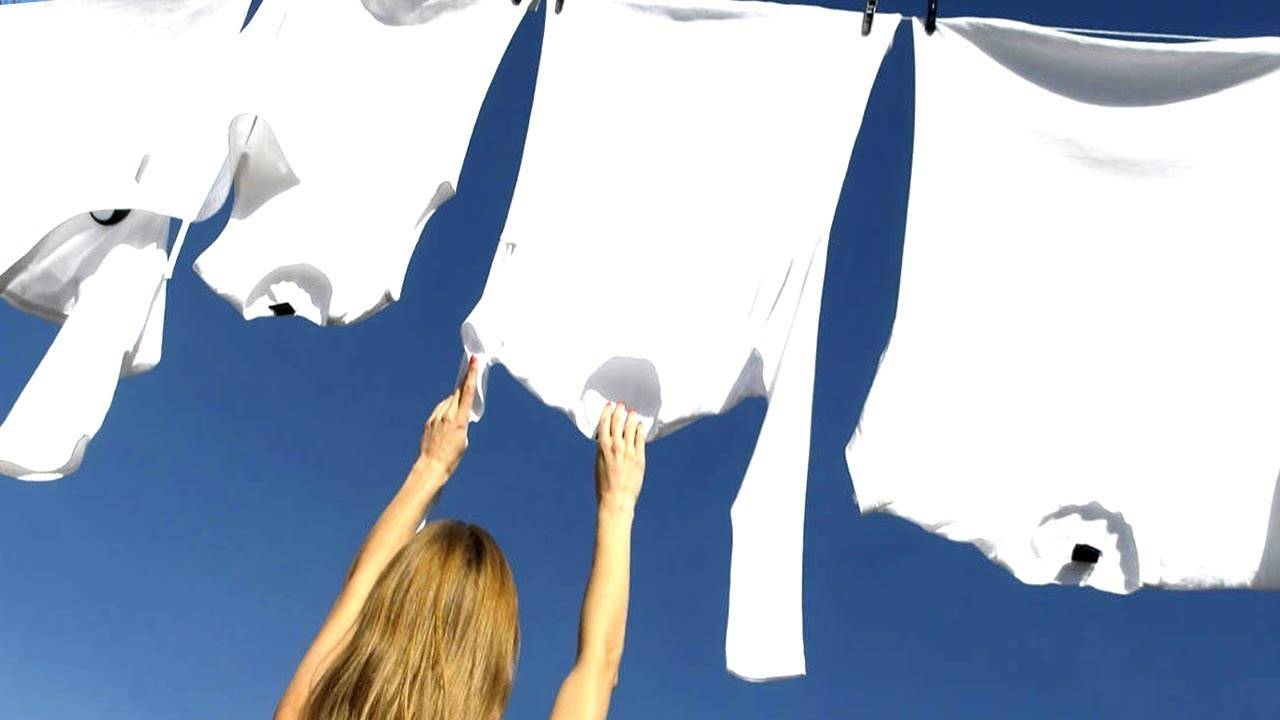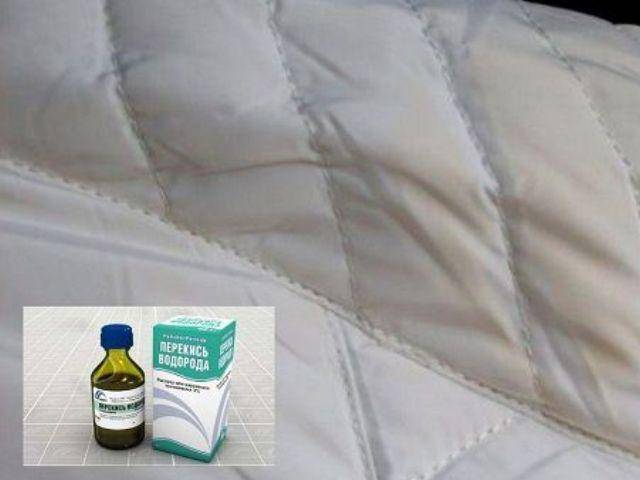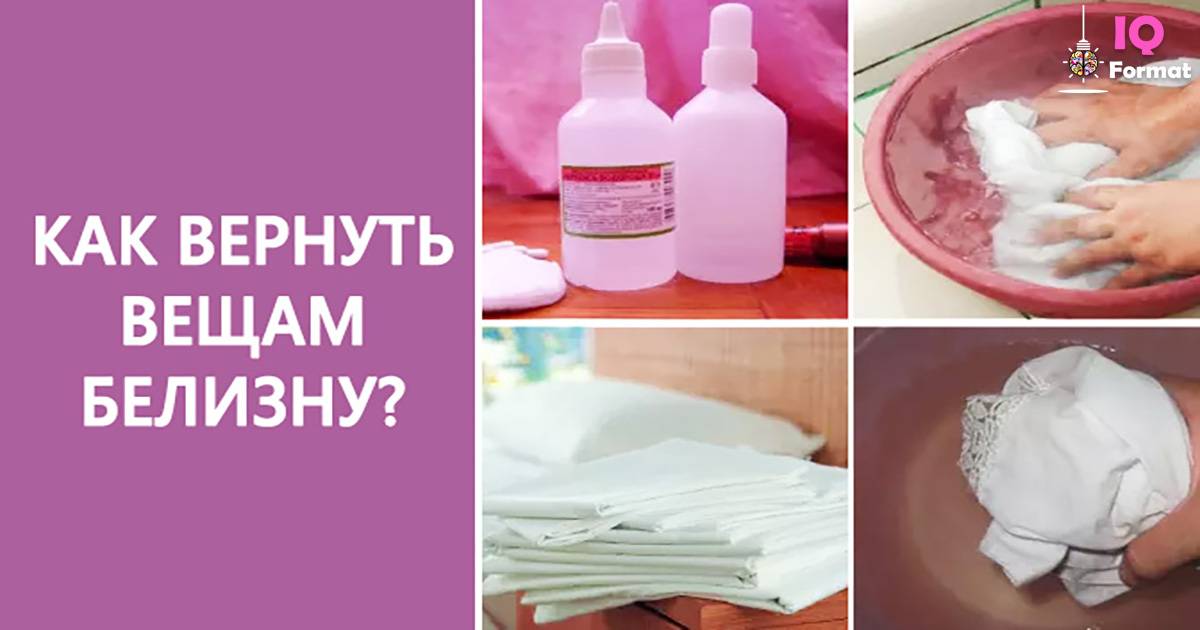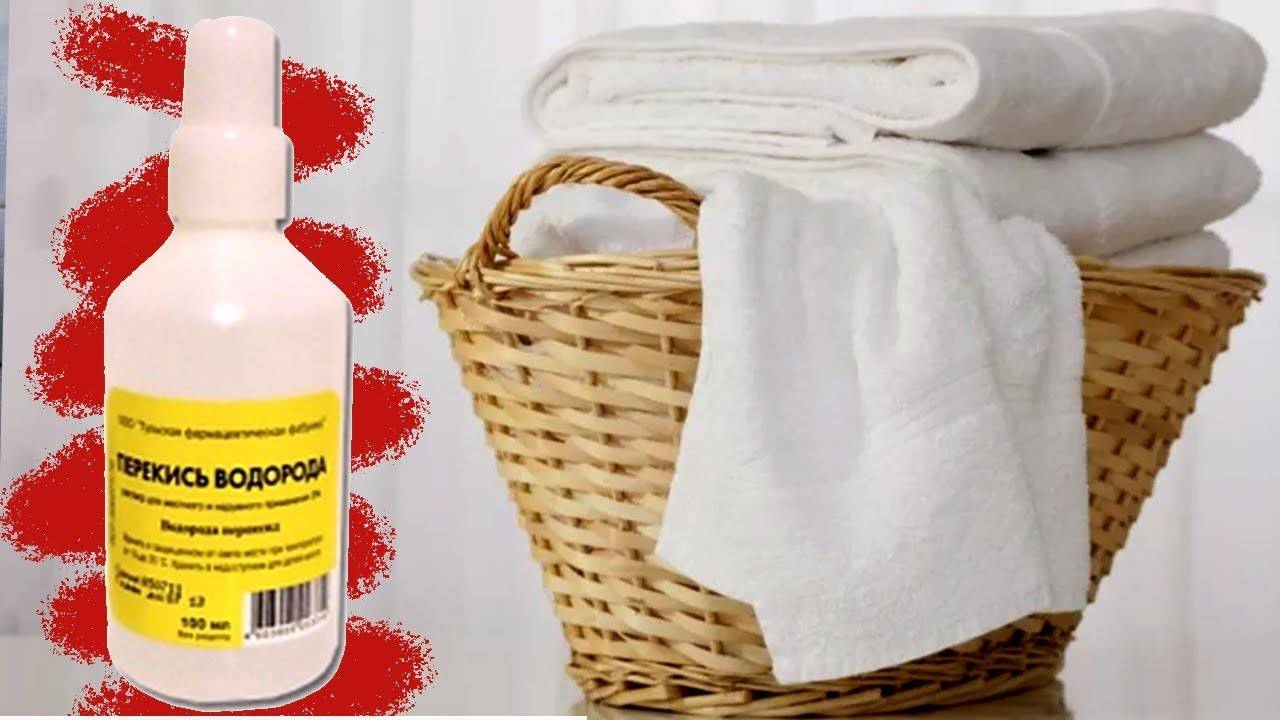Soda + laundry soap
Undoubtedly, the best means that restore color are not always safe, for this reason you can use folk remedies that can be found in any housewife.
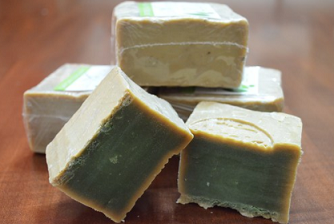
It is known that non-washable particles are often left from substances that restore color, which can affect the sensitive skin of an infant and even an adult allergy sufferer. Therefore, home whitening can be done with soap and baking soda.
As in the previous case, before bleaching bed linen at home or any other white linen, you need to make the simplest solution. For 10 liters of water, you will need 40-90 grams of grated soap (or powder), as well as 100-150 grams of baking soda. To restore the whiteness color, soaking will have to be carried out for 2-3 hours.
Whitening gray laundry
If you want to bleach tulle or guipure, you can use hydrogen peroxide and ammonia solution. To do this, the container is filled with 10 liters of water, after which a couple of large spoons of substances are added to the liquid. Linen is placed inside the composition and left for 30 minutes. Washing is carried out as usual. This procedure allows bleaching at home, while dullness disappears, and home textiles regain freshness.

You can get rid of the grayness of the product in another way. Items should be placed in the washing machine and the bleach drawer is filled with whiteness. For better bleaching, use a prewash and an extra rinse. It is recommended to bleach synthetic fabric in salted water, while for every 10 liters of liquid, a couple of tablespoons of the bulk component are added.

Review of store-bought bleaches
There are many products for washing clothes at home. Manufacturers change brands, but the formulations remain the same. By properties and functions, they are divided into 3 groups:
- Optical substances have recently appeared on the market. The principle of operation is based on the creation of a fabric whitening effect due to luminescent white particles, which, when applied to linen, are retained in the pile. Reflectors are added to premium products. They work well with the rest of the bands. Optical substances are detrimental to colored things, a white coating appears.
- With chlorine. Features: low cost, additional disinfection of linen. The negative point is the destruction of the tissue, corrodes the threads. Clothes become fragile, tear after several washings. For safe and effective use, dilute with water before washing. It is forbidden to use for wool, silk. High concentrations, frequent use will lead to yellowing. The use of chlorine substances in the washing machine is not recommended. Be careful when doing hand washing. Household bleach with chlorine can cause a chemical burn if it comes into contact with the skin, mucous membranes of the eyes, nose and throat. Contraindicated in case of a tendency to allergies. Sodium hydrochloride in the composition is a more aggressive element, it can damage thin tissues. Recommended for durable items (linen, cotton);
- Oxygen-containing substances are recognized as effective and modern. They take good care of clothes made from natural, synthetic fibers. On store shelves, there are similar products for colored fabrics that do not change color, remove stains. Bleach for clothes at home with oxygen is harmless, environmentally friendly, does not provoke allergic reactions. The cost is higher than chlorine products. Produced in the form of gels, powders, tablets.Cope with any type of pollution, give its original appearance, whiteness.
Applying store-bought bleach
In advanced cases, folk remedies can not cope with the task of bleaching textiles, in addition, the necessary composition may not be at hand
Therefore, it is important to keep at least one of the industrial stain control products in your home. Popular and effective in-store laundry solutions:
- special soap for removing local impurities. It is used by analogy with the household one, but it has a more pronounced effect, it often helps the first time;
- oxygen aids - an innovation inspired by hydrogen peroxide. Applicable to almost all fabrics, even the most delicate, can be used for things with complex prints;
- chlorine bleaches are applicable only to materials made from natural plant fibers.
In conclusion, it is worth examining several ready-made solutions that are popular in the market:
- "Antipyatin" - stain removing soap;
- "Vanish oxy action" - oxygen powder for textiles, carpets and upholstered furniture;
- "BOS" - compositions for soaking linen in the middle price category with a preventive effect;
- "Minutka" - a budget line of stain removers;
- Amway - organic products with absolute safety and effectiveness, presented on the market at the highest price.
Traditional methods of whitening
It so happens that there is no traditional bleach in the house. Then you can turn to non-traditional methods of whitening. Some of the products were also used by our grandmothers, others are identical to industrial ones, just cooked at home.
Hydrogen peroxide
Hydrogen peroxide will serve to whiten clothes
- Add hydrogen peroxide to the washing powder during washing in the machine (10 ml per 25 liters of washing powder or gel for five minutes at a temperature of 70-80 degrees). If conditions cannot be met, wash by hand.
- To bleach your underwear, mix three tablespoons of 3% peroxide in 12 liters of hot water. Soak clean laundry in the solution for one hour, then rinse and dry as usual.
- To bleach woolen and silk items, it is necessary to prepare a solution: for 12 liters of warm water 250 gr. salt, 30 gr. washing powder and 1 liter of hydrogen peroxide. Soak things for 3-4 hours, and then rinse well.
- For washed things, the following method is suitable: rub the thing with laundry soap and put it in hot water. Add hydrogen peroxide to the water at the rate of 40 ml per 5 liters of water. Bleach in this way for 3 hours and then rinse the laundry.
- To restore the original whiteness to the gray tulle, add 1 tbsp of water to 10 liters of water. l. ammonia and 2 tbsp. l. peroxide. Soak for 5 minutes, then rinse in cold water. In a similar solution, you can boil bed linen. (35 grams of ammonia and 35 grams of peroxide are added to an aluminum or enamel bowl with water, boiled for 40 minutes).
- In combination with lemon juice, peroxide removes yellow stains on synthetics. The juice of one lemon is mixed with 1 tsp. peroxide and applied to stains, rinsed after 30 minutes.
Boiling
An old grandmother's method is boiling. The method is really effective if done correctly. Only cotton and linen items can be boiled. For boiling, a zinc or enamel container is suitable, at the bottom of which a white cloth is placed. Powder or soap dissolves well in water, and the stains are lathered.
Instead of boiling powder, you can use a mixture of grated laundry soap and soda ash (lye) in a 1: 1 ratio. Another solution is to mix one teaspoon of bleach with a liter of water, stand, add a clear solution to boiling water. But this product can damage the fabric, be careful!
If you do not want to buy a targeted action product, use your own prepared formulations.
# 1. Soda
1.The method is delicate and safe. Soda is used in several ways: add 50 gr. in the second compartment of the machine, pour the powder into the first. Or make a bleach solution.
2. In this case, combine 300 gr. powder with 10-12 liters. water, let the granules dissolve. Lower your bras and panties for 2-3 hours, then wash thoroughly.
1.In order to increase efficiency, ammonia is mixed with soda. The composition is suitable for lace and other delicate materials.
2. So, the solution is made as follows: 10 liters. water accounts for 0.4 kg. soda and 60 ml. ammonia.
3. The product is soaked in this product for about 2 hours, in the end, do not forget to wash the clothes.
No. 3. Peroxide
1. Another option is how to whiten delicate underwear. If you have peroxide at home, then measure out 60 ml. preparation and combine with 10 liters. water.
2. Optionally, you can enter ammonia in the amount of 25 ml. Dip the underwear into the prepared composition and wait for a third of an hour. Finish by washing your garments several times in clean water.
No. 4. Digestion
1. Not the safest technique, but you can resort to it if you need to bleach cotton / linen.
2. Fill the enamel bucket with water not to the brim. Add shavings from 1/3 of a bar of laundry soap.
3. Dampen things, rub them very hard with soap. Heat the water, dip the products inside and cook for 45 minutes. Remove and send to the machine.
1 Common methods of whitening
Every woman should be able to bleach things correctly if she wants to see her loved ones tidy. But not only household wardrobe items need such a procedure - quite often this manipulation is also necessary for such interior decorations as tablecloths, cloth napkins and favorite curtains. Therefore, the question of how to whiten things at home will always be relevant.
At the moment, the household chemicals market can offer a huge variety of products. All of them have a different price category, and any housewife can purchase a substance, taking into account their financial capabilities.
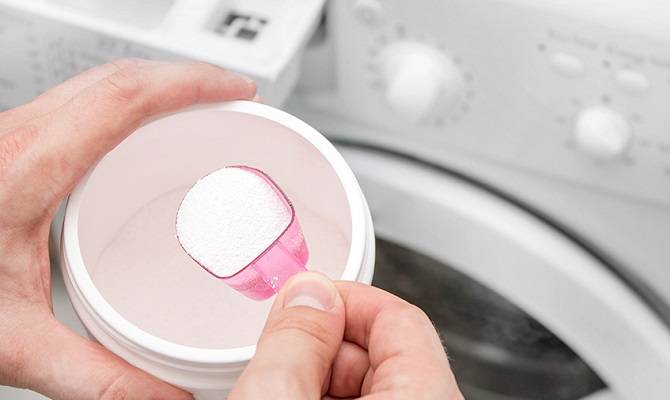 Using a washing powder with a whitening effect
Using a washing powder with a whitening effect
There are situations when a woman in a hurry loads the washing machine and a multi-colored thing gets to light-colored clothes. As a result, at the exit, the hostess will be surprised in the form of multi-colored linen instead of the expected snow-white. The situation is familiar to many women firsthand. But even in this case, there is a way out, if you know what means you can use to whiten the resulting surprise, without spoiling the fabric and shape of the product.
To get rid of laundry stains, use the following products:
- whiteness;
- washing powder with a whitening effect;
- special detergents designed for bleaching in machine wash.
Thanks to these chemicals, you can easily return the previous color to things. But before using these drugs, you must read the instructions, since not all funds are universal. In other words, if it is necessary to bleach a thing that has a synthetic composition, then the stain remover must also be appropriate.
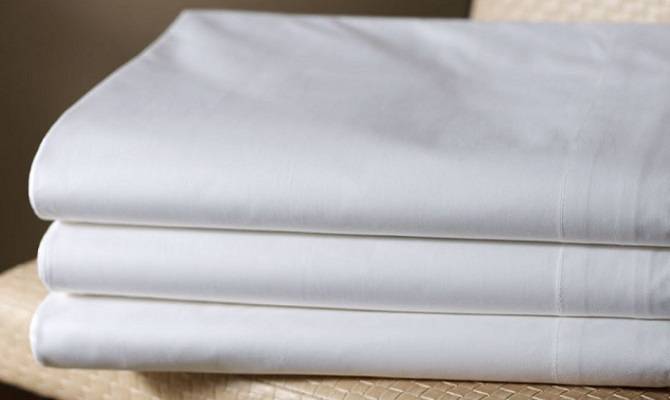 White linens after washing with special products
White linens after washing with special products
In most cases, the above products are designed to be machine washed. Although there are a huge number of types used for manual processing. Therefore, each housewife can choose exactly the whitening agent that is needed in her situation.
Method number 3. Lemon acid
- Citric acid powder can be used in many ways. One option is to whiten light-colored items. The method is not designed for delicate fabrics; cotton or linen is suitable for soaking.
- Measure out 60 ml. drinking water, pour a bag (teaspoon) of lemon into it. Add a tablespoon of shavings of laundry or tar soap and the same amount of cornstarch.
- Pour in 10-14 gr. table salt.You should get the consistency of thick sour cream. Adjust the viscosity of the mixture. When everything is ready, spread the gruel over the dirt and rub in.
- The exposure time depends on the age and size of the spots - from 2 to 4 hours. After the allotted time, rinse the item thoroughly, wash it by hand or in a typewriter, dry it away from the sun.
Washing features
Some items are machine washable. The care guidelines are usually indicated on the labels, box, or accompanying documentation. You can wash white laces with your shoes using regular powder. This method is effective when there is no heavy contamination. Otherwise, it is better to pre-wash them with a stain remover or apply it for a while, then place the product in a separate bag with other light-colored items for further washing.
Soap application
Identify the dirtiest areas before using soap or solution. These are usually clear spots in the eyelet area. The following means are used for cleaning:
-
Laundry soap. Universal detergent. The product soaked in water is thoroughly lathered and left for a period of several minutes to an hour. It needs to be rinsed well. If the result is not satisfactory, the procedure is repeated. You can use a solution of laundry soap for soaking, after a few hours the lacing is hand washed and rinsed. Areas that are difficult to wash can be rubbed separately with an old soap and toothbrush. The main thing is not to overdo it and not to damage the structure of the fabric, otherwise in the future the material will become dirty faster.
- Anti-stain soap. The household chemicals market offers a huge number of similar products of different brands. Among them are Sarma, Vanish, Dr. Beckmann, Eared Nanny and others. A contaminated product is treated with a product and left for a while, then rinsed. There is no trace of stains, grayness and dirt.
- Liquid soap for washing. Any liquid product is poured into hot water, the product is soaked in it for a while. It remains only to rinse. If the laces have not been properly washed, resort to boiling in soapy water.
Using bleach
Any chlorine-based product can be used to wash white laces to whiteness. Plumbing cleaners are suitable for this. When getting rid of stubborn dirt, two methods are used:
-
Soak. In a plastic container, bleach or chlorine-containing sanitary ware is diluted with warm water. The laces are soaked for an hour to a day. The product is washed in soapy water and rinsed in clean water. If there is no time, you can apply undiluted product to the laces, leave for 5 minutes, and then rinse them well or throw them in the washing machine. You can use any product that is at hand, but it is better to use foreign bleaches, which will not make the laces yellow and wash away the dirt well.
- Boiling. An enamel pot for household needs is taken, bleach and water are diluted in it. Boil the laces over low heat for about 30 minutes. Then a clean cloth is removed and rinsed. A good result is obtained by adding to the solution any stain remover that can make the product whiter without a yellow tint.
Toothpaste
You can brush your white laces with regular toothpaste. To do this, the fabric is rubbed with a composition, preferably a bleaching agent, and left to dry completely. In the future, the lacing is washed by hand and dried.
Homemade remedy
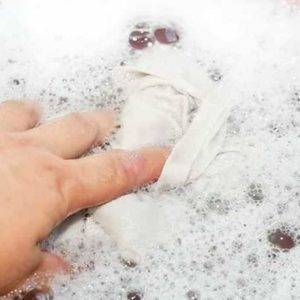
The resulting bleach is applied with a sponge or brush to the laces and fabric to be washed. It is advisable to use gloves to prevent the occurrence of allergic reactions on the skin. The product is left for 15 minutes, after which the product is rinsed in water and dried.
Ten ways to boil things
Dissolve 250 grams of soap shavings and soda in ten liters of water.Things are boiled for at least one and a half hours, then rinsed in clean warm water;
For bleaching and disinfection, add 500 grams of bleach or bleach and soda per ten liters of water. Stir and strain. Boil laundry for 30-60 minutes, rinse and send to dry;
For baby clothes, take baby powder or use a coarse grater for baby soap and add to the water. Boil for 20-30 minutes. For heavily dirty laundry, you can use both products, but you need to rinse such material twice as much after the procedure;
Boiling and washing overalls and rough materials will require a more aggressive and effective formulation. To do this, rub 0.5 kg of laundry soap for ten liters of water, take 300 grams of silicate glue and soda each
While stirring the mixture, carefully add a few tablespoons of kerosene and gradually lower things. Boil clothes for about an hour and transfer to regular soapy water
Then simmer for another 40-60 minutes;
For ten liters, take 1.5 cups of soda, two tablespoons of hydrogen peroxide 3% and ammonia. Mix and boil clothes in the resulting solution for up to 40-45 minutes;
For five liters of water, mix a third cup of hydrogen peroxide 3% and half a cup of washing powder. In this composition, it is enough to boil for half an hour;
Mix a third cup of washing powder, two tablespoons each of dry bleach and vegetable oil. Add the mixture to the water and boil the laundry for about forty minutes;
To save a white faded thing, add 20 grams of hydrogen peroxide 6% to the water and boil the clothes for 30 minutes. As a result, the paint will go into the water, and the material will turn white again. This method will even correct the situation when the product is colored not evenly, but in parts and spots;
Dissolve four cups of powder and a cap of bleach in water. Boil things for half an hour, and then leave in this composition for another 6-8 hours. After that, wash as usual and rinse thoroughly;
To dye and bleach jeans, turn the pants over to the wrong side and place them in water without using additional products. Boil the products until the desired color is obtained.
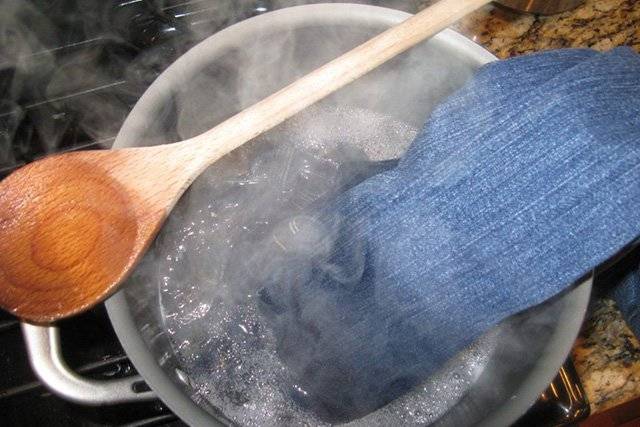
Bleaching white bed linen in a typewriter
Over time, due to hard water containing an impressive amount of salts, the laundry takes on an untidy grayish or yellowish tint. In addition, the fabric loses its attractiveness due to improper storage. Prolonged exposure of the product in a damp room or too long drying of the bed in the sun entails damage to the material. It is not easy to wash such large items, the most convenient way is to bleach the laundry in an automatic machine.
No boiling
A couple of decades ago, boiling was considered the only way to bleach. This is a labor-intensive, long-term, rather dangerous process that significantly reduces the life of the linen. Now the combination of innovative products and special washing modes allows you to return things to their original cleanliness. How to bleach white linen in a typewriter:
choose the right product;
pre-soak the product;
pay attention to the mode and temperature of washing;
dry the product properly.
To clean a sheet or duvet cover in automatic mode, the correct selection of a household chemical product is of key importance. The use of an optical brightener shows good results. They are suitable for creating a visual effect of radiance, but do not have any real brightening effect. In addition, such products are not able to remove intense pollution. Optical brightener should be purchased for items that have lost their shine due to long-term storage. For a delicate and intense cleansing, oxygen formulations are suitable. They are used for any type of fabric, but they are expensive.
It is strictly forbidden to use chlorine-containing bleaches for cleaning in an automatic machine.Products such as Whiteness can negatively affect the performance of technology. In addition, regular use of chlorine leads to thinning and yellowing of bed linen. Whiteness should only be used when necessary, for example for disinfection.
In the presence of intense dirt or a pronounced gray color, it is worth pre-soaking the laundry in warm water. The soak time can range from 2 to 12 hours, depending on the product used and the desired result. You can add ready-made bleach, soda, hydrogen peroxide, citric acid to the water. In addition, it is allowed to apply a stain remover on pronounced stains. Soaking should not be neglected even in the case of an unpleasant odor: prolonged exposure to water helps to get rid of mustiness.
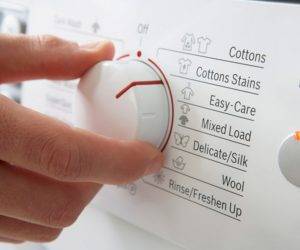 The washing mode is selected depending on the type of material from which the laundry is made. The best results are obtained with high-temperature programs, which involve intensive movement of the drum of the automatic machine. However, modes such as "cotton", "bed linen", "linen" are suitable only for natural fabrics that are not subject to shrinkage and shedding. To care for synthetic fabric or silk, it is better to choose a medium temperature and set a long wash cycle. In addition, the number of revolutions per minute should be minimized.
The washing mode is selected depending on the type of material from which the laundry is made. The best results are obtained with high-temperature programs, which involve intensive movement of the drum of the automatic machine. However, modes such as "cotton", "bed linen", "linen" are suitable only for natural fabrics that are not subject to shrinkage and shedding. To care for synthetic fabric or silk, it is better to choose a medium temperature and set a long wash cycle. In addition, the number of revolutions per minute should be minimized.
At the end of the procedure, the laundry should be hung out in the open air or in a clothes dryer. It is not recommended to place the products in a damp room, near artificial heat sources and keep them in the sun for a long time. In summer, it is best to do your laundry in warm, clear weather in the early morning or before sunset. It is recommended to make sure that the laundry is not damp or wet in the rain or snow.
How to bleach whites with boric acid
- What he copes with. Boric acid solution is not able to remove yellowness. But it will rid things of dullness and return them to their former whiteness. For example, it will refresh old washed bed linen.
- What fabrics it is suitable for. For cotton and linen, as well as synthetics, if not boiled.
Dissolve 2 tablespoons of boric acid in two liters of warm water. Leave the clothes in the mixture for 2 hours, stirring occasionally, and machine wash.
If the dirt is old, boiling will help. To do this, put the container with things and the prepared solution over low heat. You do not need to soak your laundry. Boil for about 1 hour and place in the washing machine.
How to return whiteness with improvised means
You can restore whiteness to clothes using the means tested by our grandmothers. These funds will be found in the house of every housewife.
Soda and laundry soap
To achieve a good result, you can pre-soak the item in a baking soda solution. For a stronger effect, you can combine 5 tablespoons of baking soda with 2 tablespoons of soap (it is best to grate it first), as well as 5 liters of water. Products that require bleaching should be soaked in the prepared solution for 2-3 hours, and then rinsed thoroughly with a machine or by hand. No expensive bleach can compete with the whitening effect.
Hydrogen peroxide and soda
Not many people know how to bleach laundry using hydrogen peroxide. This bleaching method is most often used to clean individual areas of things. For example: T-shirt collar or shirt cuffs, armpits. For the whitening process, you need to mix soda (2 tablespoons), as well as hydrogen peroxide (2 tablespoons). The mixture should be applied to problematic yellow areas and left for 30 minutes. A prepared solution of 5 liters of ordinary water, 200 grams of peroxide and 5 tablespoons of soda will help to consolidate the effect obtained. The solution should cover things completely.
Ammonia and soda
Grayness and yellow spots on once white clothes can be removed by soaking the product in a special solution. To prepare it, you need to take:
- Ammonium alcohol - 2 tbsp. spoons.
- Baking soda - 5 tbsp. spoons.
- Hot water - 4-5 liters.
In this solution, you need to soak the thing before the main wash.
As you have already noticed, there is nothing complicated and out of the ordinary in conventional whitening. Try to give your favorite once-white T-shirt or shirt a second life. Thus, having pleased yourself and your household with a beautiful appearance and significant savings in the family budget.
I am a man of the old school and I restore the whiteness of things with the help of ordinary boiling. Trust me, no product I've ever bought could achieve a better result.
Alevtina
I recently tried to remove sweat stains from my favorite summer suit with a solution of ammonia and soda. The effect pleased me, the tool can really remove so hated stains easily and simply. I recommend taking note of the hostesses.
Ira
Bleaching with hydrogen peroxide
Any Soviet person knows how to bleach clothes with hydrogen peroxide. We will use the experience of our ancestors and try this method. Hydrogen peroxide has long proven itself as a good bleach. It is available in almost any first aid kit, which indicates its availability.
The substance is excellent for washing linen and cotton products, as well as for delicate fabrics such as silk or wool. In addition, peroxide whitening acts gently without disturbing the structure and density of tissues. This method will not wear out the products.
Before starting the bleaching process, you should wash things with regular powder. In this way, not too persistent stains are removed from the product. Then you can proceed to the cleansing procedure:
- Prepare a container in which it will be convenient to soak laundry and wash, for example, a large enamel basin;
- Fill the container with 10 liters of hot water. an approximate temperature of 70 degrees;
- Add 3 large spoons of hydrogen peroxide;
- Pour in 3 large spoons of ammonia;
- Place the items in a bowl;
- Soak for half an hour;
- Start washing and rinsing.
Rinse your laundry first in warm water and then in cold water. Due to a chemical reaction, yellowed white things return to their former whiteness.
To whiten delicate fabrics, do not heat the solution above 30 degrees. For an effective process, it is better to soak woolen and silk fabrics for 5 hours, and you can also add 5-6 tablespoons of salt and a couple of tablespoons of washing powder to the solution.
Using hydrogen peroxide is great for whitening baby clothes or removing stains from clothes. For young mothers, this is a real find, since this method eliminates the presence of synthetic detergents. The solution will help to bring the clothes back to their original form, without causing allergies in the baby. To do this, use a sponge or cotton wool to rub the stain with the prepared substance, then soak the laundry for half an hour and rinse.
In addition to cleaning and bleaching laundry, this method can get rid of yellow stains left by deodorant. In order to quickly return things to their previous appearance, it is necessary to strictly follow all the recommendations. Be sure to then make sure that the clothes are completely in the solution, as failure to follow this point may lead to the presence of yellow streaks.

